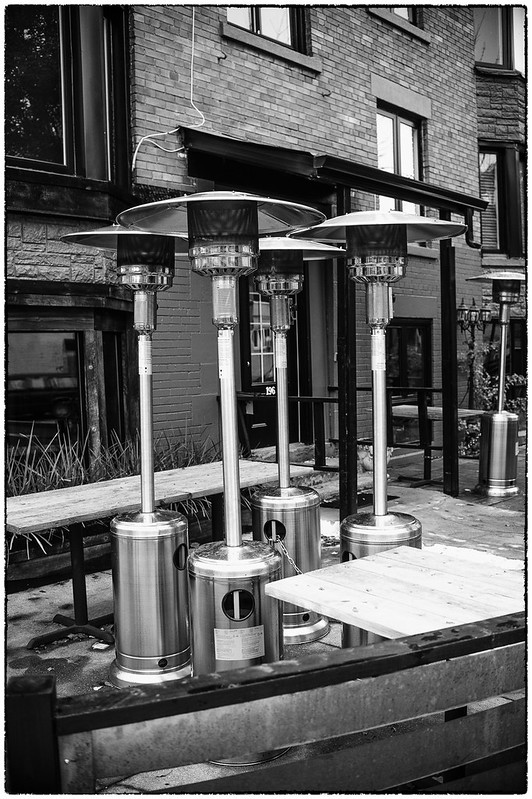
Nikon D700, Nikkor 35/1.8 G DX in FX mode
Having finally found myself with an FX body that I like I find myself considering how to put together a lens kit that both fits my needs and isn't going to cost a huge amount. Which has me looking at the value proposition for DX again.
Simply put, if you don't print huge, or have a solid collection of high-performance ultra-wide to normal lenses that are FX, or shoot a large amount of the time above ISO 800-1600, you should probably skip FX bodies and just shoot DX. There's little practical difference between FX and DX for 95% of uses, aside from the extra cost of FX, and there's quite a bit of extra cost.
Really, what does FX get you for that minimum $1k spend that a new FX body costs you over its DX equivalent (and yes, it's that much, a D7100 may only be around $800 less than a D610, but it's also a lot more body).
1. ~3db SNR. That's 1 stop better performance. You aren't going to see that stop at low ISO, and at high ISO it means you can shoot 1 stop higher ISO. Or of course you can spend that $1000 and buy a lens that's a stop or so faster.
2. 1/2 - 1 stop more DR. This matters more at mid ISO's when DR is starting to drop than it does at base ISO, and modern DX bodies already beat older FX bodies in DR (they also beat Canon bodies).
3. 1 stop less DoF. This is nice when shooting shallow-DoF stuff. It's a right pain when shooting something that needs gobs of DoF. Most people need a little of both and DX is a better tradeoff here.
4. Lens selection. At the wide end, there's just a lot more options for FX, especially if you want fast/wide. The widest DX option for faster than f2.8 is 30mm-e (20/1.8G on DX), while you get f1.4 out to 24mm and f1.8 at 20mm with FX. And nothing in DX can touch the 14-24/2.8 and currently there's no DX VR UWA
Now what do you give up?
1. Money. Not only are you paying extra for the body, but that sweet $500 17-50/2.8 OS that Sigma dominates the fast/regular zoom market with? The closest equivalent is Tamron's $1400 24-70/2.8 VC, and it's the only VR-equipped option. There's a couple steals out there if you look (Tamron's old 28-75/2.8 is remarkably good for not too much money) but in general the equivalent spec zoom is going to run twice as much, maybe 3 times if an UWA. Oh, and you need to buy a $600 1.4x TC to replace the reach you lost with your telezoom (at least the stop of light is offset by that 3db SNR advantage of FX). Primes are different, but only because there's so few DX primes (and half of them have no real reason to exist besides being cheap consumer options to go with the D3x00/D5x00 bodies)
2. Reach. Nothing puts pixels on a subject like DX. The D7000 matches the pixel density of a D810, the 24MP DX bodies all exceed it significantly. When you need reach, especially when you are already using a TC, DX wins. And nothing in F mount can combine reach and speed the way the old D300s can (12MP DX at 8fps)
3. Performance per dollar. When new the D300s was $1800. The closest equivalent FX body, the D700 was $1000 more. Today the only 8fps+ body is $6k+. There's over $1k of difference between the D750 and D7100. The D610 may be cheap for FX, but recall it's notably lower spec than a D7100 in AF, speed and shutter.
What does this mean for me? Not a lot. I'm digging the D700 and still have my pair of DX bodies. But long term? If Nikon actually ever comes out with a D300s successor it's likely I'll move back to a pure DX system. I don't see Nikon making an FX light carry camera for me to replace my current D3200 with and going dual-system is too much of a PITA.
No comments:
Post a Comment